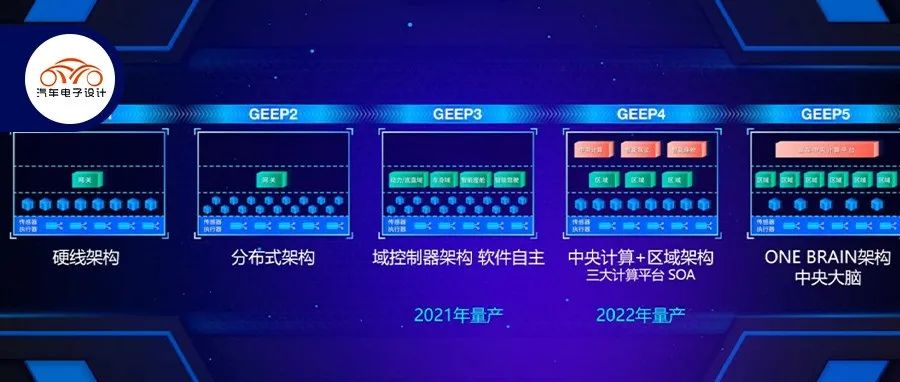Translation
Following yesterday’s article, a friend reminded me that the VCP+Zone (GEEP 4) plan by Great Wall Motors will be rolled out in October 2022, with Guangzhou Automobile Group and Changan Automobile following up with related products in 2023.
-
From a perspective of differences, the software functions of Great Wall Motors have been moved up to the central computing VCP, while zonal controllers only handle the collection of driving and power supply. In terms of software, Great Wall is requiring the SOA to be implemented.
-
From the perspective of overall implementation, Great Wall is having actual attempts in hardware integration and software intelligence as early as 2022. I think it’s necessary to sort out the current contents of Great Wall and take a look together.
Note: From a time perspective, the technology internalization of Great Wall is severe, with two different software system architectures for mass production in 2021 and 2022 (which may be actually 18 months apart), jumping directly from Domain to the Zonal architecture.
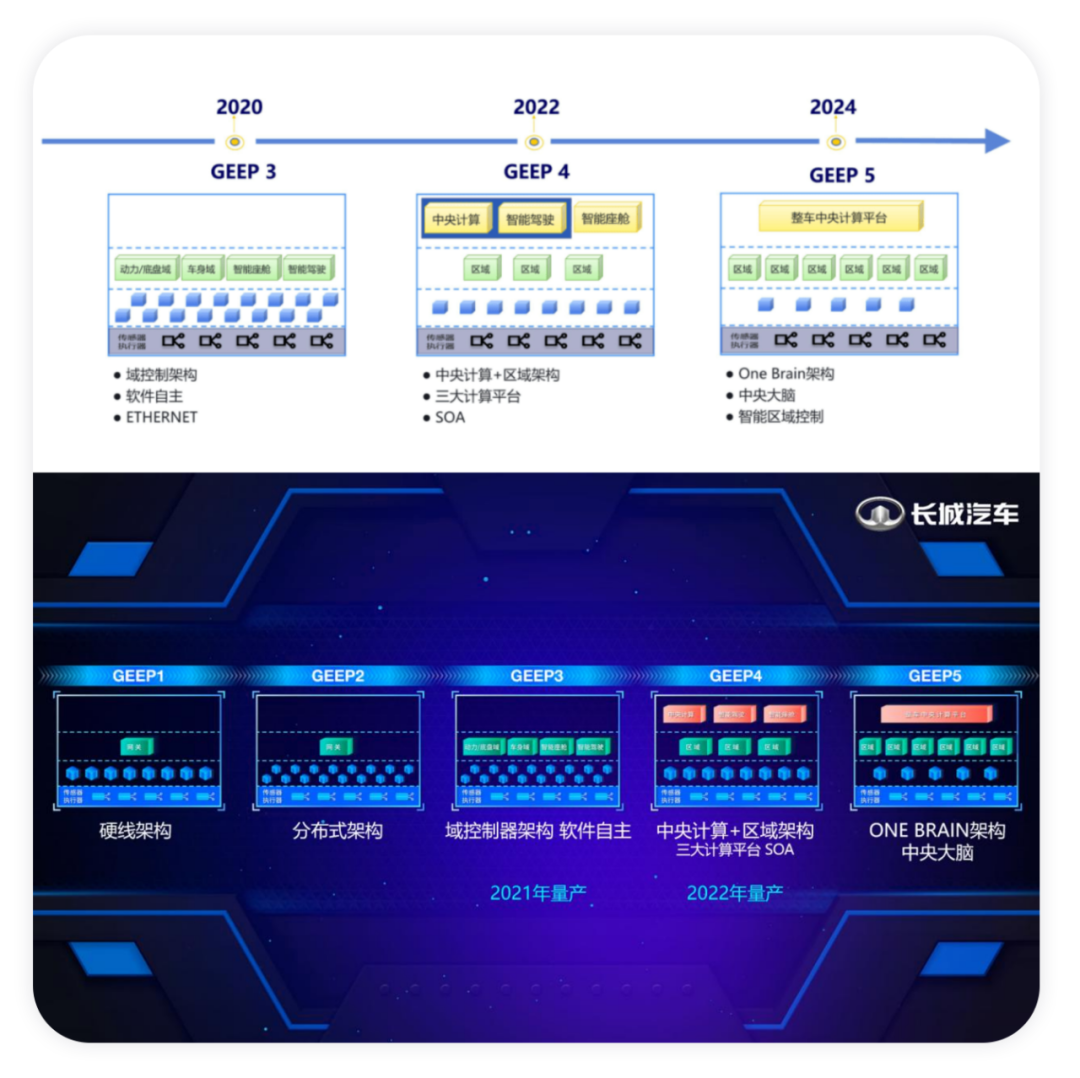
Central Computing Unit
As of now, the central computing unit has undergone systematic iterations on the basis of the original. It has cross-domain integration of body, gateway, air conditioning, power/chassis control, and ADAS functions in hardware.
As of now, the main functions of this component are as follows:
- Gateway management
18-channel CAN FD, 4-channel LIN, and 11-channel in-vehicle Ethernet, meaning that the original high-speed network system has been integrated and configured to communicate with zonal.
- Vehicle electronic control
It coordinates some functions of the original body electronics, air conditioning, and powertrain/chassis.
- Core chip
The main SOC has a high calculation capacity of up to 30KDMIPS, and this chip is supposed to be the next-generation body SOC of major manufacturers, effectively ensuring efficient control and response of the vehicle system.
- Visual processing chip solution (it’s currently unclear how this is processed), supporting storage of up to 64GB and 1GB of memory.
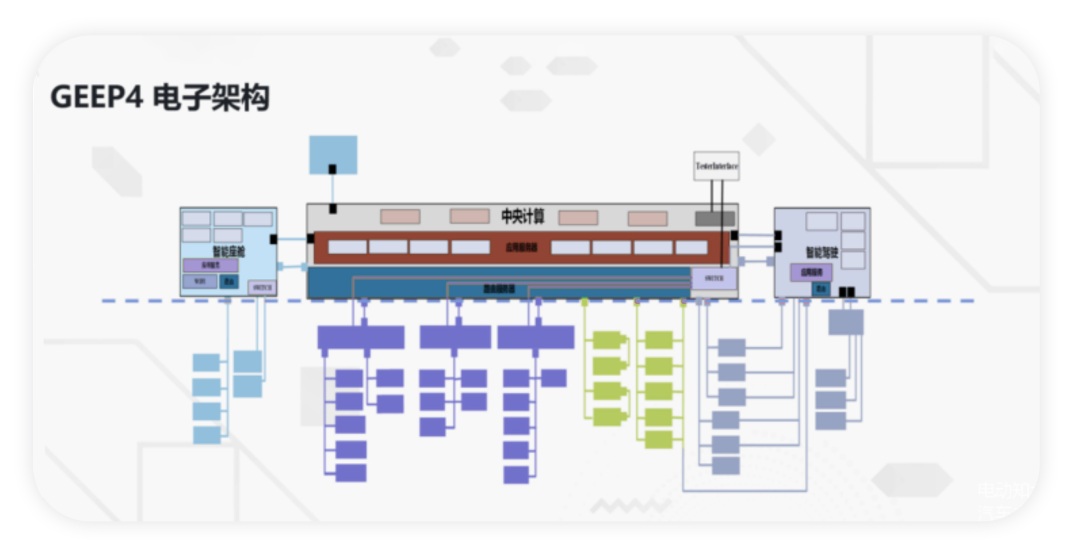
In peripheral hardware, three VIUs have been integrated into the three positions, consolidating the functions of the original CEM, AC, and PDCU, which is equivalent to managing these components according to the new power distribution, achieved by the VIU.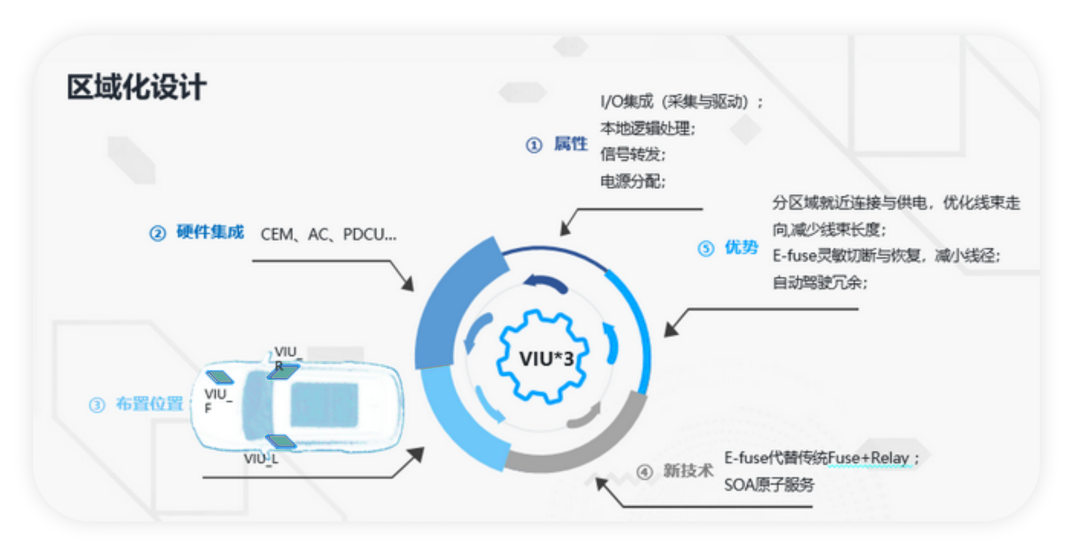
From a software perspective, the main solution is based on Linux, and some core existing ECU controls are developed around Autosar CP. The overall configuration of this software is called VAPP, which mainly focuses on the central computing area and includes the following functions:
- Three-electricity management of large VCU
Battery management, torque management, energy recovery, and vehicle control. These control functions at the original three-electricity level are migrated, which will further simplify the software of the underlying three-electricity system.
- Body electronics functions
Door lock control, seat control, lighting control, and air conditioning control.
- Diagnostics
Equipment management, power management, storage management, and log management. Using this central function, vehicle fault information can be remotely obtained through cloud diagnostics combined with network, and vehicle faults can be predicted and repaired remotely. Additionally, the diagnostic instrument architecture is reconstructed, and the diagnostic database and diagnostic script configured on the cloud are reused.
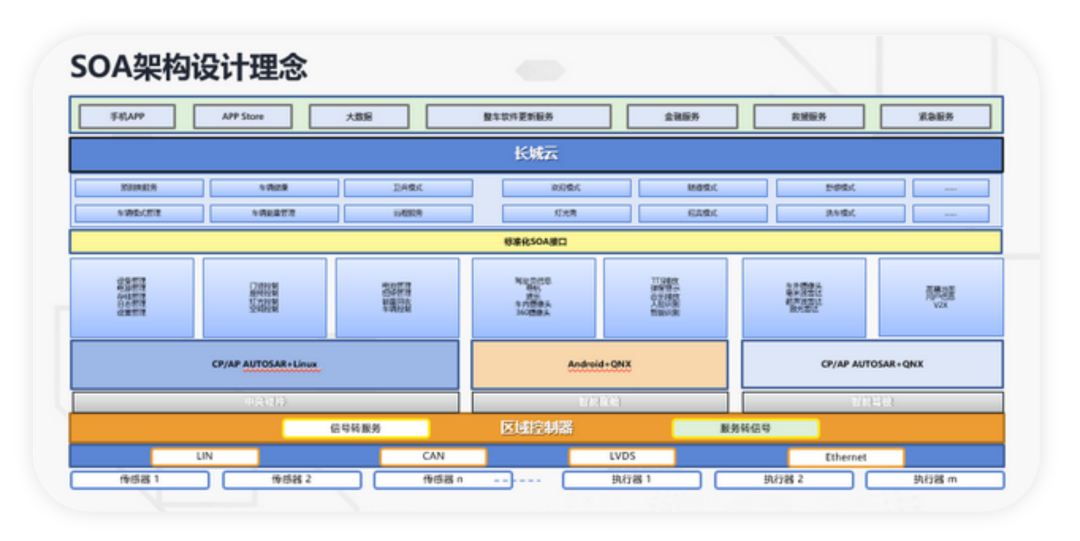
Building third-party functions and other such things will take quite some time to be implemented.
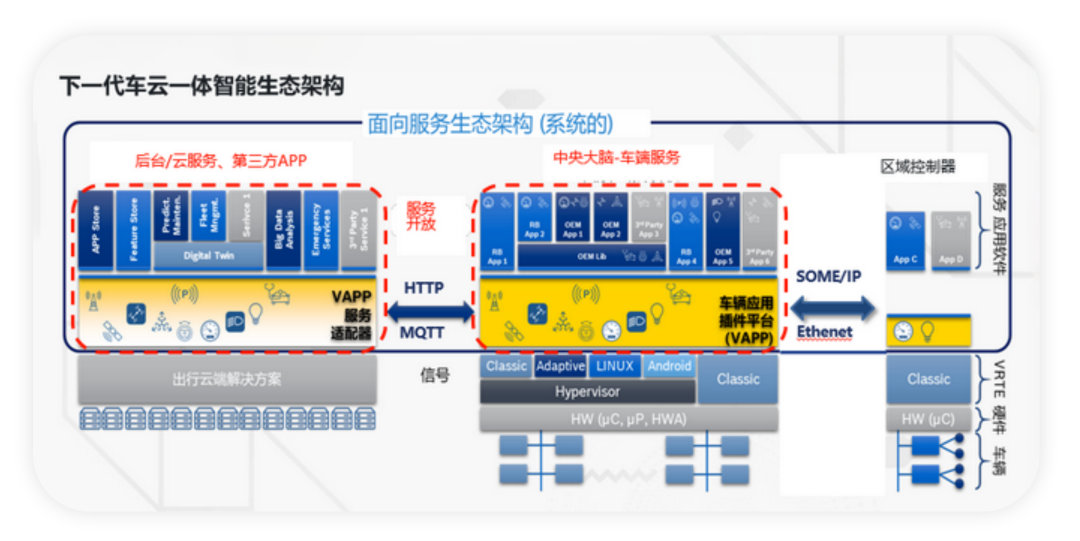
Landing Speed of Domestic Intelligence Infrastructure
Recently, I have been observing that we may have attached too much importance to electrification, focusing more on analyzing the number of vehicles and batteries. In fact, coupled with the current actual cost of batteries, whether for BEVs or DHT’s PHEVs, empowering vehicles, and introducing intelligent architecture development based on scenarios, many changes come along with the adoption of the central Body Computer. Through edge computing, a large amount of data from the entire vehicle can be collected and cabin and intelligent driving iteration becomes smoother.
That is to say, we can see a large number of domestic automakers entering the key era of intelligent vehicles by the end of 2022 to the first half of 2023, which is faster than I previously thought.Summary: Of course, there are repetitions here. To accomplish this cross-over quickly, we need to integrate a large number of Tier 1 software into the central computing platform, while maintaining functionality and reliability. This is indeed easier said than done. Of course, we need to be patient and observe the changes in the entire environment, the actual changes of Leading Project and Leading Company are the most important, and we need to look at the leaders at the forefront.
This article is a translation by ChatGPT of a Chinese report from 42HOW. If you have any questions about it, please email bd@42how.com.
